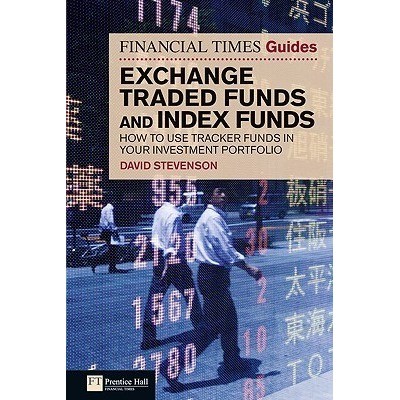Exchange Traded Funds_1
Post on: 2 Июнь, 2015 No Comment

Exchange Traded Funds
If you’re new here, you may want to subscribe to my RSS feed. Thanks for visiting!
Another popular way to passively invest is through exchange traded funds.
Today we will discuss exchange traded funds and how they differ from similar investments.
Exchange Traded Funds
Exchange traded funds (ETFs) share characteristics with a few other investments. But there are also significant differences as well.
ETFs are a collection of various securities or derivatives that attempt to replicate the performance of a benchmark index.
ETFs have a fixed number of shares outstanding.
These shares trade on authorized exchanges and can be bought or sold continuously during open exchange hours. ETF shares trade directly between investors who buy and sell through their accounts in a brokerage house.
As the trades are conducted via broker, commissions are paid when ETFs are bought or sold. However, no loads are charged on any ETF acquisitions or dispositions.
The price of the ETF shares is determined by investor supply and demand in the open market. No closing net-asset values are calculated for ETFs. Instead, ETF share prices fluctuate throughout each trading day based on trading activity.
Compare this with:
Open-End Index Mutual Funds
Open-end index mutual funds are also structured to replicate a benchmark index. In performance, gross returns should be similar to an ETF with the same benchmark index.
Open-end funds do not have a fixed number of shares or units. As new investors subscribe for shares (or units) of the mutual fund, new shares are created to reflect the addition of capital.
Open-end mutual fund shares are purchased and redeemed directly through the mutual fund company, not from other investors on an exchange.
Investors buy and sell open-end mutual funds at the fund’s closing net-asset value. Investor supply and demand has no impact on the price of the fund’s shares.
While ETFs may be traded at any time the exchange is open, open-end mutual funds only trade upon calculation of the net-asset value. For most funds, this is daily, but it can be less frequent. So open-end funds may be less liquid than ETFs.
When buying or selling open-end funds, investors may be charged a sales fee or load. Further, if one trades via their brokerage account, the trades may be subject to a broker’s commission as well. ETFs do not have any loads, only commissions on trades.
Common Shares
A company’s common shares trade on authorized exchanges or over-the-counter any time the exchange is open. A share’s price is determined by investor supply and demand for the company’s fixed number of outstanding shares. Net-asset value is irrelevant to the share price.
Shares are bought and sold through one’s brokerage account and traded directly with other investors. There are no loads, but the broker will charge a commission on any trades made.
While an ETF trades exactly like a stock, the obvious difference is the asset itself.
Whereas the ETF is a diversified portfolio of investments that seeks to replicate an index, shares are single, non-diversified investments. Depending on the company’s correlation to different indices, the shares may or may not move in tandem with a specific index.
Closed-End Investment Funds
Closed-end investment funds (CEFs) also have a fixed number of shares and trade on exchange throughout the business day. And the price of CEF shares is also determined by investor supply and demand.
There are index CEFs that replicate benchmark indices.
No loads are paid, but brokerage commissions are charged.
CEFs are essentially the same thing as an ETF. However, technically, they are not ETFs.
Okay, there are some similarities and differences between ETFs and open and closed-end index funds. Big deal.
What is the attraction of ETFs?
We will look at that next.














